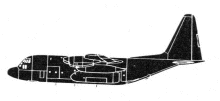Incident Overview

Description
The Cessna 208 Caravan aircraft, registered P2-MAF, owned and operated by Mission Aviation Fellowship (MAF) PNG Limited, conducting a VFR non-scheduled passenger flight operation from Kompiam to Yenkisa, experienced a runway excursion accident during its landing roll at Yenkisa Airstrip. There were four persons on board; one pilot and three passengers. There were no reported injuries. During final approach into the Yenkisa Airstrip, the pilot was affected by the visual illusion presented by the upslope strip. As a result, the pilot flew too low during the final approach. The pilot stated that during the approach, as the aircraft got closer to strip 31, he realised that he was coming too close to a protruding tree along the approach path and determined that he was too low. He immediately shallowed the descent angle. Subsequent to clearing the tree, the pilot found himself high on approach, passing the strip 31 edge. The pilot steepened the descent angle because he realized that he had overshot the strip 31 edge. During flare, the aircraft floated for some distance due to the excess energy from the steep descent. The aircraft touched down about 200 m beyond the edge of strip 31. During the initial part of the landing roll, because the strip was wet, the aircraft subsequently skid forward. The pilot did not use reverse thrust during the landing roll. The aircraft overran the airstrip, hit a mound of clay and rocks, subsequently tipping left into a gully. The Yenkisa Airstrip is located at an elevation of 3700 ft. Airstrip 13/31 has a Landing Distance Available of 465 m. Landings can only be performed on runway 31 because the runway has a 8.7% down slope to the south-east. CAUSES [CONTRIBUTING FACTORS] There were trees protruding the approach OLS into Yenkisa Airstrip, close to the edge of strip 31. No effective action had been taken before the accident, to cut the trees protruding the approach OLS for Yenkisa Airstrip, following the survey conducted by RAA in which the obstacles were identified. At the time of the accident, the pilot did not properly manage the aircraft during the final approach and landing roll. During the final approach, the pilot was affected by a visual illusion due to the 8.7% upslope of Yenkisa Airstrip. The presence of trees penetrating the approach OLS was identified by the pilot after passing the committal point defined by MAF. The pilot was focused in clearing the obstacle, losing the aiming point. The final approach was not stabilised. During the flare, the aircraft travelled further than the expected touchdown point. During landing, main landing gear wheels were most likely locked causing the aircraft to skid. The pilot decided not to use reverse thrust during landing
Source of Information
https://www.facebook.com/1499308633732130/posts/p2-maf-recovery-and-maintenancewe-are-praising-the-lord-for-the-safe-recovery-of/2537280513268265/https://www.facebook.com/1499308633732130/posts/p2-maf-recovery-and-maintenancewe-are-praising-the-lord-for-the-safe-recovery-of/2537280513268265/Primary Cause
Visual Illusion & Pilot Error ? Lack of Proper Aircraft Control & StabilizationVisual Illusion & Pilot Error ? Lack of Proper Aircraft Control & StabilizationShare on:


